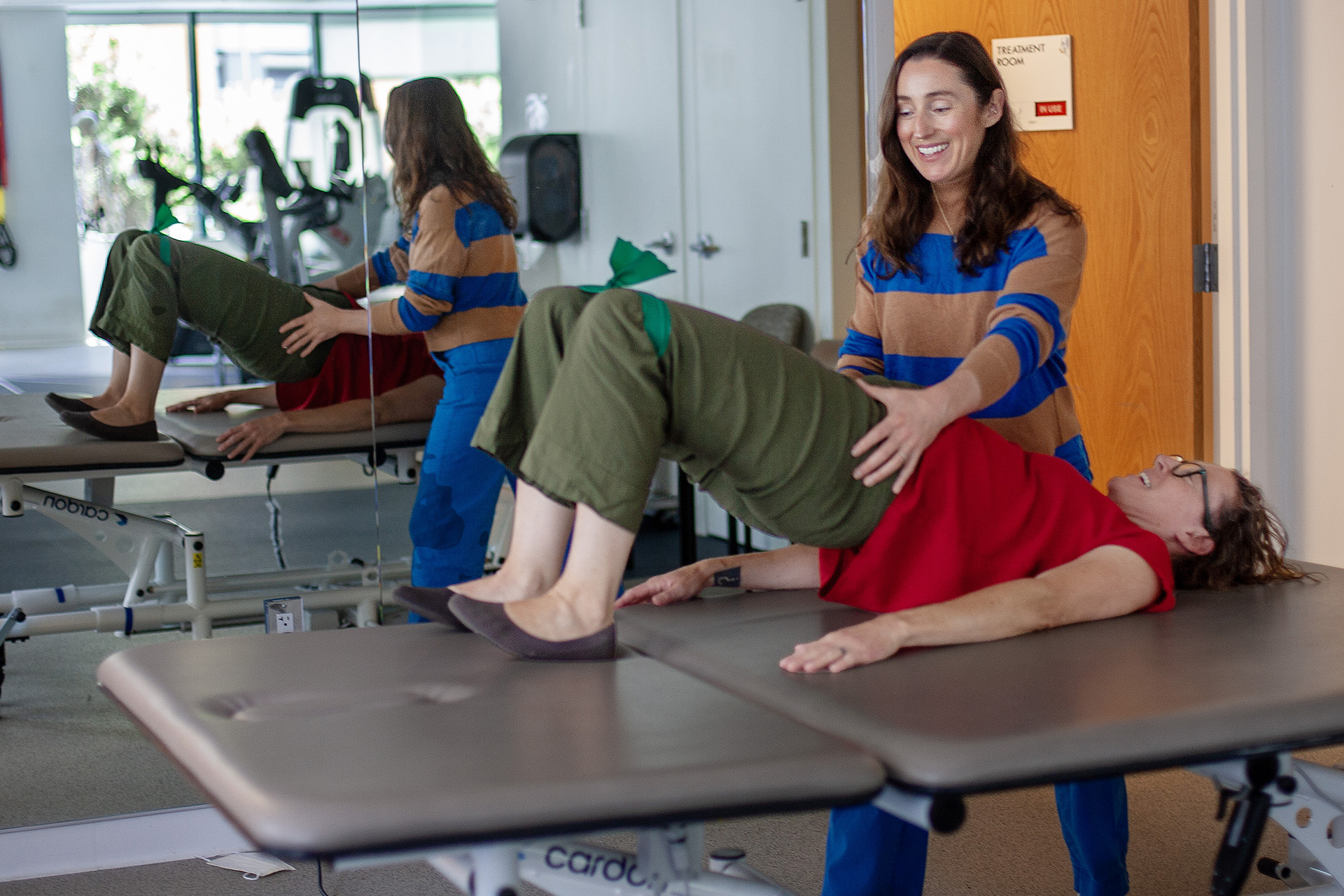After a difficult labor led to an unplanned cesarian section, the new San Francisco mother went home to recover with her healthy baby boy.
But Janie was not prepared for how her body would respond to what she just went through — the pushing, the hormones. Everything was different now.
She began to experience urinary incontinence for months that didn’t go away — something that about one-third of women experience after giving birth. Would this last forever?

And if that wasn’t enough, sex was now dreadfully painful. Her C-section scar hurt, too.
“It was brutal,” Janie said. “It was like, ‘Wait, my whole body is totally different now.’ I had to attack it physically as well as emotionally.”
Through a referral from her ob-gyn, she started postpartum physical therapy to help with the incontinence, the pain in her C-section scar, and the pain during sex.
“I think most women don’t know you can get postpartum physical therapy,” Janie said. “It totally saved me. I tell all my friends about the physical therapy when I hear they are having a baby.”
Rebecca Margulies, MD, Urogynecology Division director at Kaiser Permanente in Oakland and Richmond, said about 30% of women have some degree of urinary incontinence after giving birth and about 10% have fecal or gas incontinence. Untreated postpartum incontinence can lead to depression, she added.
“Pelvic organ prolapse also is an issue but it is not as common as incontinence,” said Dr. Margulies. “These are very common issues, but unfortunately there is a lot of embarrassment and stigma around them. Fortunately, there is good evidence that postpartum physical therapy helps, and we offer it at Kaiser Permanente across Northern California.”

Whitney Rogers, Kaiser Permanente Rehabilitation Service supervisor in San Francisco, said physical therapists teach patients exercises to strengthen or in some cases to relax muscles to better control the bladder, help with vaginal wall prolapse and to treat an aesthetic condition known as diastasis recti abdominus in which the abdominal wall muscles separate longitudinally.
Physical therapists also do pelvic exams as part of the service.
“It is very common for new parents who were really active to now feel like a bomb exploded in their body,” said Rogers. “We can help you retrain your muscles and do exercises to make them work better.”
For Janie, one-on-one postpartum physical therapy about once a month over the last 18 months has been a “life saver.”
“It’s nice to get that customized care and really find out what’s going on down there,” she said, adding that she hopes to get pregnant again soon. “I don’t know what I would have done without it.”




